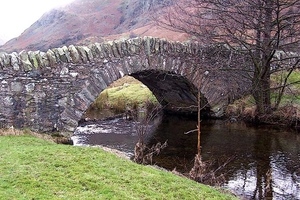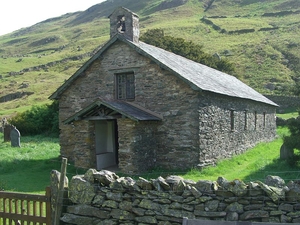n170
This was more than just a fancy, as the primary purpose for this excursion was to
purchase a property suitable for the growing Wordsworth clan. Thanks to the assistance
of his patron, Lord Lowther, Wordsworth was soon thereafter able to acquire the Broad
How farm near Ullswater. Wordsworth never built a family home on the site and sold
the property in 1834.


